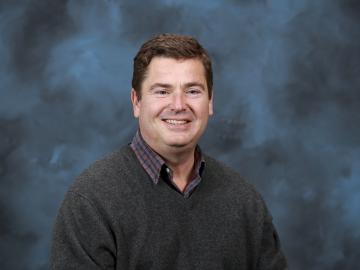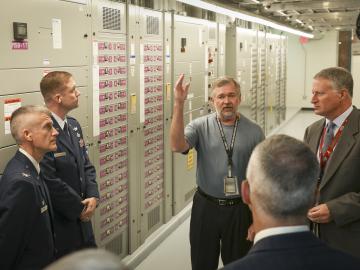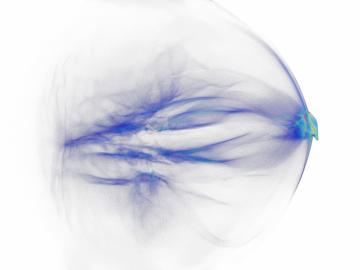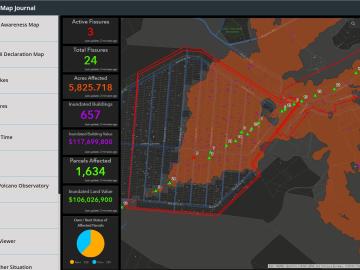
Filter News
Area of Research
- (-) Nuclear Science and Technology (20)
- (-) Supercomputing (43)
- Advanced Manufacturing (5)
- Biological Systems (5)
- Biology and Environment (4)
- Biology and Soft Matter (1)
- Building Technologies (4)
- Chemical and Engineering Materials (2)
- Chemistry and Physics at Interfaces (6)
- Clean Energy (89)
- Climate and Environmental Systems (2)
- Computational Biology (1)
- Computational Chemistry (1)
- Energy Frontier Research Centers (8)
- Fossil Energy (1)
- Fuel Cycle Science and Technology (1)
- Functional Materials for Energy (6)
- Fusion Energy (2)
- Geographic Information Science and Technology (2)
- Isotope Development and Production (1)
- Materials (91)
- Materials Synthesis from Atoms to Systems (5)
- Materials Under Extremes (6)
- National Security (2)
- Neutron Data Analysis and Visualization (2)
- Neutron Science (36)
- Nuclear Systems Modeling, Simulation and Validation (1)
- Quantum Condensed Matter (2)
- Reactor Technology (1)
- Sensors and Controls (2)
- Transportation Systems (2)
News Topics
- Advanced Reactors (1)
- Artificial Intelligence (1)
- Biomedical (1)
- Computer Science (6)
- Critical Materials (1)
- Fusion (1)
- Isotopes (2)
- Materials Science (2)
- Molten Salt (3)
- Neutron Science (1)
- Nuclear Energy (6)
- Physics (1)
- Polymers (1)
- Quantum Science (1)
- Space Exploration (1)
- Summit (2)
- Transportation (1)
Media Contacts

The United Kingdom’s National Nuclear Laboratory and the U.S. Department of Energy’s Oak Ridge National Laboratory have agreed to cooperate on a wide range of nuclear energy research and development efforts that leverage both organizations’ unique expertise and capabilities.

Experts focused on the future of nuclear technology will gather at Oak Ridge National Laboratory for the fourth annual Molten Salt Reactor Workshop on October 3–4.


Long-haul tractor trailers, often referred to as “18-wheelers,” transport everything from household goods to supermarket foodstuffs across the United States every year. According to the Bureau of Transportation Statistics, these trucks moved more than 10 billion tons of goods—70.6 ...

For the US military, accurate weather prediction is vital to both the planning and execution of worldwide missions. To extend its weather modeling capabilities, the US Air Force has joined the computing experts at the US Department of Energy’s (DOE’s) Oak Ridge National Laborato...



A tiny vial of gray powder produced at the Department of Energy’s Oak Ridge National Laboratory is the backbone of a new experiment to study the intense magnetic fields created in nuclear collisions.

The US Department of Energy’s Oak Ridge National Laboratory is once again officially home to the fastest supercomputer in the world, according to the TOP500 List, a semiannual ranking of the world’s fastest computing systems.

In an effort to reduce errors in the analyses of diagnostic images by health professionals, a team of researchers from the Department of Energy’s Oak Ridge National Laboratory has improved understanding of the cognitive processes


